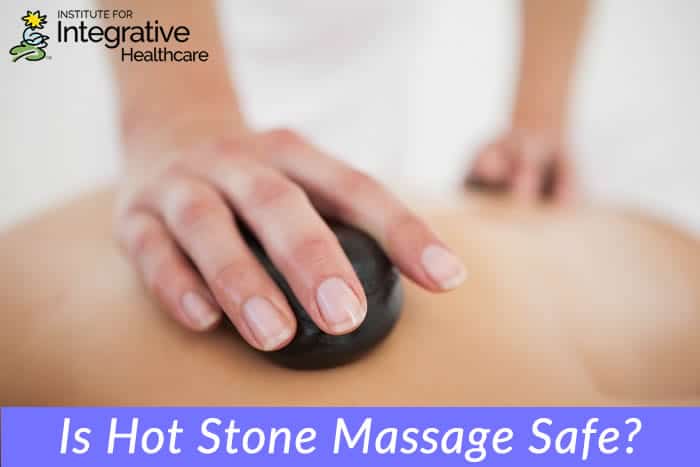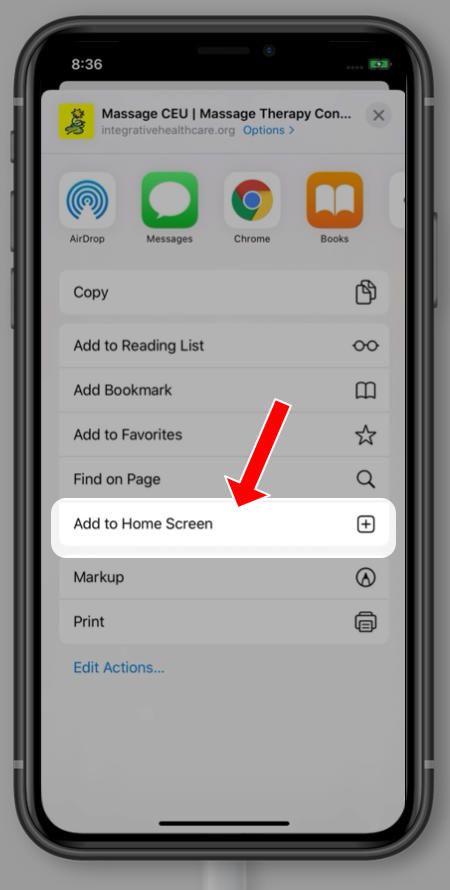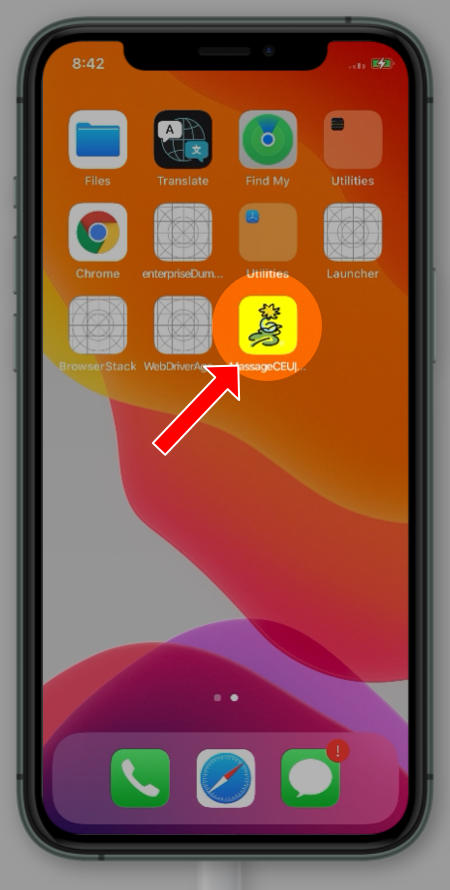

There is nothing better on a cold day than lying on a heated massage table, muscles melting under the added warmth of a hot stone massage. Not all hot stone massages are created equal, however, and there are several things that therapists (and clients) should know in order to ensure that this delightful service remains a yummy treatment.
Typically the term “hot stone massage” refers to a technique that involves the therapist holding heated stones in his or her hands while working on the client with gliding strokes. These stones are usually heated in water, in either a roaster or crock pot, but can be heated in a dry hot cabbie.
Unfortunately, this service can go horribly wrong very quickly. Clients get burned due to overheated stones and stones that are placed directly on bare skin or worse, placed under the body. Many therapists have argued that additional training is not necessary for hot stone massage, that the use of hot stones is nothing more than the addition of a simple tool and the training most therapists receive in massage school is sufficient. But there is basic safety information specific to hot stone massage that may not be covered in every massage school that is necessary in order to ensure clients do not become injured.
According to a statement from the Associated Bodywork & Massage Professionals (ABMP):
While not widely regarded as an entry-level staple, hot stone massage is popular with the public and employers at spas and franchise massage clinics. This system of bodywork shows up regularly in entry-level training programs.
Burns from hot stone massage most often occur (in order of frequency) when therapists:
- Placed heated stones on bare skin and left the stones in this static position.
- Placed stones underneath clients and left them (even when a layer of insulation like a towel is used) in this static position.
- Performed hot stone massage on children under the age of 18 (children tend not to speak up when something about the massage feels uncomfortable and they have less adipose and thinner skin than adults).
- Performed hot stone massage on older adults (usually between the ages of 68-80 who have thinner skin and less adipose than younger adults do).
In January of 2012, ABMP launched an aggressive safety campaign related to hot stone massage. The campaign included special e-blasts and newsletter articles. ABMP also began requiring therapists and teachers at member schools who practice or teach stone massage to watch a 7-minute safety video, and review and acknowledge safety guidelines to activate their stone massage insurance. The results have been exciting. Therapists have written letters and emails thanking us for helping them increase their safety. Considering our loss experience two years prior to the new safety campaign our loss experience two years following the launch we have determined the frequency of hot stone claims has decreased by 75%. The severity of our hot stone claims (in terms of settlements and loss related legal expenses) has decreased by 85%.
As we can see, a few minutes of basic safety training specific to hot stone massage has significantly reduced the number of injuries and the severity of remaining injuries by a significant amount. There is no denying the payoff of this basic safety training program.
Temperatures
The average human skin temperature is 92 degrees. Hot tubs are usually around 104 degrees and most people find them to be right about at the threshold of nice and hot and too hot.
For hydrotherapy, following range of temperatures will feel as follows:
- 35 – 56 degrees: Very Cold
- 56 – 65 degrees: Cold
- 65 – 92 degrees: Cool
- 92 – 98 degrees: Tepid/Neutral
- 98 – 104 degrees: Warm to Hot
- 104+ degrees: Very Hot
If the average skin temperature is 92 degrees, stone temperatures should never be higher than 120 degrees and will usually be hot enough for most clients at about 105-110 degrees.
Example: Many new therapists have asked me, “Where are the tongs?” as they go into their first hot stone massages. My response has always been: “Why do you need tongs? If you can’t stick your hand in there and pick up a stone, don’t put one on me!” Think about that – if the water and stones are so hot that you cannot reach in and pull a stone out, would you want someone to place that stone on your bare skin?
Effects of Cold and Hot Therapies
The effects of cold are increased stimulation and circulation, decreased inflammation and decreased pain. Cold acts as an analgesic, reducing nerve sensitivity and is stimulating to the body.
The effects of heat on the body are increased circulation (especially at the surface), metabolism and inflammation, and a decrease in pain, muscle spasm and tissue stiffness. Heat quiets and relaxes the entire body, is efficient, nontoxic and promotes sleep.
Contraindications for Hot Stone Massage
Contraindications for hot stone massage begin with the same cautions as for any type of massage therapy: fever, contagious diseases such as colds and flu, being under the influence of drugs or alcohol, recent surgery or acute injuries. And, similarly, local contraindications such as severe bruises, cuts and abrasions should be avoided along with varicose veins and sunburn.
Hot stone massage, however, is going to have an increased effect on certain conditions due to the additional heat added to the body. Pregnant clients should not receive a very hot stone massage, but warm stones can be used so long as the client is otherwise able to receive massage therapy. Edema, cardiovascular conditions and high blood pressure can all be aggravated more by hot stone massage, as the effects can be even greater than those of other massage modalities due to the additional heat. Similarly, those with diabetes who are suffering from decreased sensitivity may not be aware they are being burned, so very hot stones should not be used on them.
Sanitation
Just as hand washing is vital to the health of the therapist and client, so too is it vital to properly clean and sanitize the stones and heating unit. Stones should be washed (scrubbed) with hot, soapy water, specifically with an antibacterial/antiviral agent and dried thoroughly before being stored. Stones are porous and so need to be washed with a coarse rag or brush and a clean towel used to dry them and the unit. Stones should never be stored wet or with the oil residue still on them or the heating unit, as this is a breeding ground for bacteria and viruses to grow. Stones should always be properly cleaned between clients to avoid passing along any bacteria, viruses or diseases between clients.
9 Tips for Successful Stone Massage
In order to provide a successful hot stone massage that is safe and comfortable for the client, keep these guidelines in mind:
- Begin by sanitizing the stones and heater you are using by washing (scrubbing) in hot, soapy water and drying stones and heater thoroughly.
- A white hand towel or washcloth in the bottom of your roaster or crock pot helps you see the stones and quiets the noise the stones make while you are in session.
- Leave the lid off; when you place the lid on squarely, the heat gets trapped and the stones tend to overheat – even on low or warm.
- Regardless of which type of heater used, be sure to use a thermometer to accurately gauge the temperature of the stones, keeping the temperature well under 140 degrees. Be sure you can reach in and grab a stone in your hand.
- Try keeping a small bowl of cold water for too hot stones. If you accidentally overheat the stones, you can use this bowl of cold water to cool them down by dipping the hot stones in quickly. This allows you to work with the stones while you wait for the heater to cool down.
- Try using cold stones (quarts or granite) on the face for contrast. Allow stones to rest in a small bowl of ice water to get them cold.
- When working with stones, be sure to avoid hyperextending the wrist as this can lead to fatigue and pain in the therapists’ wrists, hands and forearms.
- Heat will absorb faster in different areas of the body so be on the lookout for this. It typically feels great for the client when you slow the stones and allow the heat to be absorbed in these areas. Also, stones can be used to address trigger points or to activate tsubos (shiatsu points), and reflexology points. Other nice touches are tapping one stone with another over trigger points or placing a large stone to rest (on a towel) on the abdomen and rotating clockwise.
- Do not allow the stones to rest in a static position on bare skin or place the stones under the client. Also be aware that damp towels, sheets or blankets will transfer heat very fast so be sure the towel, sheet or blanket is dry before placing a hot stone to rest on it.
Any type of heater can be used to heat stones for massage therapy, but it is the responsibility of the therapist to be sure they do not become overheated. It is also important that the stones and heater be cleaned and sanitized properly between each client. Therapist must also be aware of the additional risks and contraindications that may arise due to the addition of hot stones and be able to work with clients to ensure they receive appropriate services.
Almost any modality or product can be abused and become harmful to the client if not administered appropriately. The ABMP, by virtue of their education campaign, demonstrated significant improvements in the massage therapy field. There are less injuries overall, less severe injuries when they do occur, and better client outcomes with a minimal amount of education for therapists. As massage therapists, it is our responsibility to make sure we have the best possible training in whatever modality we offer to clients.












In many workplaces, the stone warmers are not set up by the therapists who often have no time to set up or check a boiling warmer. IMO the manufacturers need to have better heating systems for more even temperatures like a ceramic surface similar to a flat iron with a programmable thermostat. Water temperature does not equal the heat of the stone which can vary greatly. Water can be scalding while stones do not hold heat long enough to do a treatment. Quality of stones vary widely also. Stones must be basalt to hold heat, not just some cheap substitute that’s carved out and a decent size to hold the heat. Manufacturers of cheap equipment are also to blame here.
I have been a therapist for over 13 years. I never did like doing stone massage for a variety of reasons. That is why I created Sassi Stones, Self-Heating Massage Stones. It eliminates the need for a roaster and hot water. Even though Sassi Stones are not in water the same challenges arise with heat management. It is not fair to blame the manufactures of stone warmers for clients being burned. The number one get burned is because the therapist did not get properly instructed on heat management. There needs to be a knowledge of physics in order for the client to receive a safe stone massage whether it be from Sassi Stones or Basalt stones. Clients get burned the most with placement stones. The therapist feels the surface of the stone and assumes the stone is cool enough to be placed on the body. What they don’t realize sometimes is the center of the stone has a lot of energy in it and is still hot. The heat needs to escape so it goes from the center of the stone to the surface. The stone then slowly burns the guest with out them realizing it like a frog in a slowly boiling pot of water. I admit I have not been the best at educating therapists on the physics of heat management. Soon I will have tutorials on our website that will better understand heat management for any type of stone massage.
Dominic
I have avoided doing hot stone massage for years. Last time I was weaseled into doing one the poor client was not safe – I am clumsy and it was more like a meteor shower than a massage….
I am a certified La Stone therapist since 1999. I was certified after a 4 day class. I went home and practiced on 10 people before I began doing La Stone on my clients.
The rock rubbing therapist have really given the stone modality a poor name.
When a client has a real stone massage like La Stone or Sacred Stone it is the best massage they have ever had.
Do yourself a favor. Take the time, spend some money and invest in proper training. I love my stones, they are here to serve us and make our lives better by taking our body’s aches and pains away.
This is a very powerful therapy and should be approached with respect.
proper training, yet you went through a 4 day course.
This post was two years ago. However if a therapist does out calls and a full treatment is not really realistic, are you saying spot treatment with stones is not Theraputic?
I love using my basalt stones. I collected them myself down river from the town Basalt, CO.
We studied and practiced hot stone massage during massage therapy education.
In my practice, I use common sense .. if I can’t hold the stones in my hands, they are too hot for my client’s skin and under lying tissues. This seems to me, simple and logical … apparently not simple or logical to some others.
So, as others have stated, hot stones are a powerful, therapeutic modality. This technique should be respected and the potential harm to clients need be realized before using hot stones.
My best advice is, before using hot stones, even if you’ve had training, have a hot stone massage done on your self, on your table, with your stones heated in your heating device. This could be an excellent awareness creator.
When a Practicing Massage Therapist in Hawaii, hot stone treatments came into vogue. As a group, we consulted with Hawaiian healers and asked how and when stones were used, and which kind. The one point not mentioned yet is the guideline to never place a warm stone on bone, nor on an organ. The warm stone is only for the fleshy muscles, and only after it has cooled significantly could it rest on a fleshy part. I continually am concerned that the photographs used to advertise hot stone treatments show the stones on the spine. It may be that the therapist avoids the spine, but the photo is misleading and I have told other therapists to take them off my spine. The reasoning is to not warm and loosen the deep stabilizing ligaments too much; and cause the client to sustain kinesiological damage once up and about. Very important to discuss with the Therapist prior to hot stone treatment, what their protocol will be, so both parties are on the same page when working with heat.
Great Article!!! Do you have a link to the ABMP study by chance? I’m wondering if this official study addressed SPECIFICALLY that “Any type of heater can be used to heat stones”??? There seems to be a big push about “professional equipment” being necessary… because the insurance underwriters may not cover a claim in the event of a liability occurring with the burns, etc to the client. So a study or statement directly from ABMP addressing required equipment would settled that! (Just to note, I have felt more unsafe (sooo unsafe that I went back to the crock pot) and at risk of burning a client and potential for liability claim- because of the uneven heating and poor quality of “professional equipment”.. so I’m not sure that I’m buying into the necessity of “professional equipment” argument.) Thanks a Bunch!! 🙂
I have been a nuts and bolts (NMT) massage therapist for over 20 years and have been utilizing warm and cool stones as a modality for most of that time. I love my stones and consider them important tools. I agree with the recommendations that encourage you to err on the side of caution. Just like any modality you need to take 5 things into consideration 1. your experience with the modality 2. how familiar you are with the client 3. how educated is your client with the modality ( informed consent) 4. the overall condition and health of your client 5. what are the treatment goals and which modality applications will best support that goal The combination of these will direct you in your treatment plan and protocol development. There is great opportunity for creativity and effectiveness with any modality, including stones. Just remember your first obligation is to “harm not” the second should be to work smarter not harder.
I was wondering if the shingles I got
, right after I got a hot stone massage had to do with it. I’m a very healthy person , I eat very well and exercise every day. Can somebody tell me, if I got this viral infection for the hot stone massage ?
No Jenny…I don’t think so… depending on the person age it has to do with the immunologic system . But not from hot stones…I mean in our days everything is possible… look what is happening with this Ebola virus !
No, shingles is a reactivation of the chicken pox virus. When you have chicken pox as a youngster, you recover but the virus never goes away. It lies dormant on nerve tissue. Later in life, it can be reactivated, resulting in an episode of shingles. This can especially happen when the body is stressed or at a time of low immunity, or if you are already fighting off another illness. So, shingles is never a new infection but a reactivation of a virus that you caught a long time ago, thus you wouldn’t have caught it from the hot stones.
I’ve always checked the stones on the inside of my arm, where it is soft. If it is too hot than it is too hot for the client. I beg..and plead my clients to not be afraid to tell me that the stones are too hot. I do not ever want to burn someone. Ever. I’d rather a luke warm stone to a lawsuit. I like placement but only on areas that are problematic or deep fascia like ham strings.. I massage the oil on first.. get my stones ready.. warm a little oil on the stones and heat my hands up and continue to massage with heated hands prior to using the stones on the skin. Then I place or massage with them. I am getting comfortable with that. I’ve also used a hot towel on the back.. placed the stones in nec. areas then covered with a another towel or blanket.. Client loved it.
I found this article while searching for burns during hot stone pedicure. I was at an Asian nail salon to get a pedi done and she talked me into getting a hot stone pedi since I’d never gotten one. Well, the stones were so hot, she had to use oven mitts just to hold them. When she put them against the bottom of my feet, it was like stepping on a white sand beach after the sun had been hitting hit all day. It got super uncomfortable there and along my calves and I couldn’t take it. It was the worst experience I’ve ever had. I’ll never do that again!
I had a hot stone massage 2 days ago. I was laid face up on a bed, the stones were put just below my shoulder blades, with a towel on top of the stones. The stones were very uncomfortable to lie on and very warm. These stones were not moved to any other position. Nothing was said by the therapist about the marks on my back.
I paid my bill, my back was sore but I thought it was from the uncomfortable rocks that had been under me. I met my friends and asked that they look at my back, I had 2 round burns on my back. I went back to the spa and complained. The same therapist took me to her room, looked at it, put a cooling substance on me. We went back to the front desk where they took $55.00 off my substantial bill. The therapist is the only person who saw the damage.
I hour later I was in emergency for deep 2nd degree burns.
Hot Stone massage is completely safe and superbly effective “IF” the therapist has been FULLY TRAINED. I took a one-week, on-site course from Mary Nelson, the creator of the method. However, when I’ve gone to other therapists as a client and requested Hot Stone massage I’ve been very disappointed in that NONE of the LMTs had any more than a training video as their “education”. Guys, a video just won’t cut it. We are in a HANDS-ON business and MUST be trained in the ‘mentor-to-student’ way. Please, please, PLEASE seek out the finest education when you are attempting to learn a new technique. When I signed up for the LaStone class, I had NO IDEA my teacher would be Mary Nelson herself, and I can’t tell you how invaluable it was to learn from the original. Was this the ‘easiest’ way to learn how to ‘work with rocks’? No. I had to fly to a different city, pay for a week in a hotel, pay for the class, pay for three meals each day, etc. but none of that matters when you leave the class FULLY PREPARED to embark upon a new technique.
As a Massage Instructor I really take exception with pictures of stones on the spine. We do not work on the spine with or without stones!!!!!
As per my experience Hot Stone Massage is safe if the massage therapist is fully trained, experienced and know the technique of massage. Like in Washington DC, Qi Image Spa is the leading Spa and massage center who own experience and professional therapist. Not only me my husband also took hot stone massage therapy from them. We both experienced the amazing relaxation and ease in muscle stiffness.